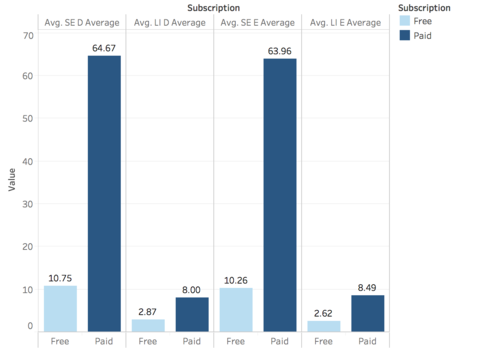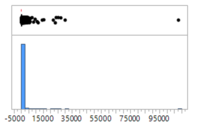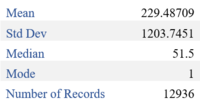Difference between revisions of "REO Project Findings EDA"
Gtong.2014 (talk | contribs) |
Gtong.2014 (talk | contribs) |
||
| Line 76: | Line 76: | ||
==Type of Listings== | ==Type of Listings== | ||
[[File:REO_listing.png|right|300px]] | [[File:REO_listing.png|right|300px]] | ||
| − | + | As mentioned before, synced listings refer to listings that are imported to 99.co while organic listings refer to listings that are created on 99.co. Despite posting similar number of synced listings as free users, paid users post significantly more organic listings than the free users. This is beneficial for 99.co since it shows that paid users priortise using 99.co compared to other platforms. This is especially relevant in today’s age where users can be subscribing to multiple platforms to post their listings. It is also interesting to note that free users tend to post synced listings whereas paid users tend to post organic listings. | |
Revision as of 01:29, 27 February 2018
| Data Preparation | Exploratory Data Analysis | Cluster Analysis |
Contents
Multivariate Analysis of Variables

Figure 1: Correlation Matrix of Variables (left); Pearson Correlation of Variables (right)
Some of the variables are highly correlated with each other, notably the total number of listings and total number of sessions as well as the number of organic listings and total number of listings. The former suggests that the more frequent a user logs onto the portal, the more posting the user posts. The latter relationship suggests that most of the listings posted are organic compared to synced.
Paid vs Free users
The distribution of the total number of sessions as seen is positively skewed so the measures for the distribution regarding central tendency and dispersion are not very accurate. This is replicated across all variables created. As such, the team explores the option of splitting the users into paid and free. Based on our sponsor meeting and secondary research, we have also gathered that free users have restrictions regarding the number of listings they can post which could influence the number of sessions they logged onto the portal and number of enquiries they receive as well. There are 7536 free users and 5331 paid users in the dataset.
Number of Days since Registration

The average number of days since registration for paid users is 823.2 which is around 2 years 3 months. It is also interesting to note that there is a spike of paid users (1110 users) joining between 975 days and 999 days. This could be matched with the period where there is publicity for 99.co due to the circulation of articles regarding 99.co receiving funding from Facebook co-founder, Sequoia Capital. Being associated with a well-known organisation could help them to gain users. On the other hand, the average number of days joined for free users is 812 which is around the same as paid users. The pattern seems similar as the paid users where the spike takes place between 975 days and 999 days.
Key Activity Indicators

Figure 5: Activity Levels Across Variables for Paid and Free Users
Looking at variables representing activity level of an user (i.e. number of cobrokes and enquiries received, the average number of listings posted as well as the average number of sessions posted), we can see the activity level of a paid user is higher than a free user across all variables.
Average Activity across Weekday and Weekend

Figure 6: Activity Level (Number of Sessions and Listings) Across Weekday and Weekend for Paid and Free Users
To compare the number of sessions on weekdays and weekends, we have applied different weights to the total number of session (0.5 for weekends and 0.2 for weekdays) because of the number of days in the week. There is higher usage on weekends compared to weekdays as seen from the graphic above for both listings and number of sessions logged. This shows that there could be a segment of paid users that are active only on weekends.
Average Activity across Timeslots


The team has previously established that the activity levels for paid and free users are different. As such, when we investigate the number of listings posted and sessions logged in 4 different timeslots, as seen below.

As the nature of a property agent is flexible, the team hypothesised that the users would display an online pattern of appearing in the afternoon. This is because they are not restrained to a nine-to-six working hours. However, based on the graph above, we can conclude that the activity levels across timeslots 2,3 and 4 are rather similar.
Type of Listings
As mentioned before, synced listings refer to listings that are imported to 99.co while organic listings refer to listings that are created on 99.co. Despite posting similar number of synced listings as free users, paid users post significantly more organic listings than the free users. This is beneficial for 99.co since it shows that paid users priortise using 99.co compared to other platforms. This is especially relevant in today’s age where users can be subscribing to multiple platforms to post their listings. It is also interesting to note that free users tend to post synced listings whereas paid users tend to post organic listings.



